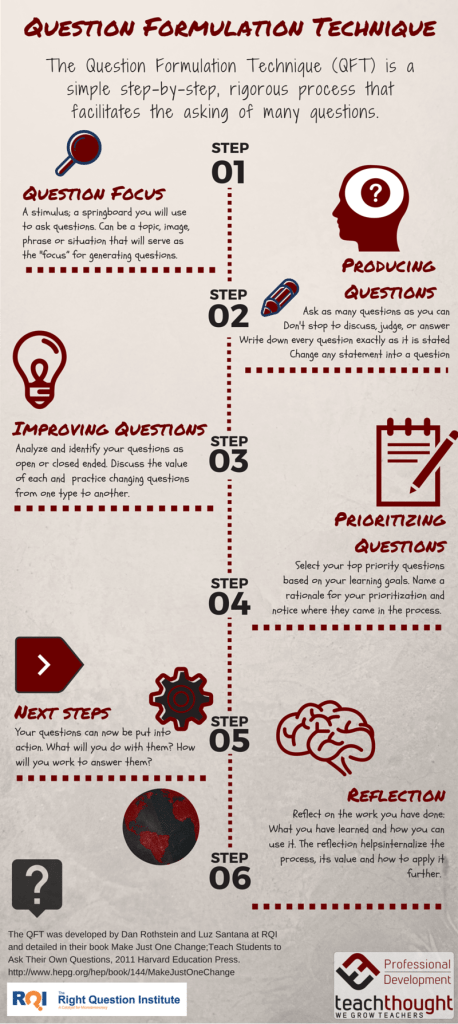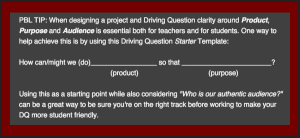
by Drew Perkins, Director of TeachThought Professional Development
TeachThought readers have probably figured out that I’m a big fan of Project-Based Learning.
I think it’s a potential game-changer for the culture of a school when done well and have written about it before here: What PBL Can Do For Your School–And What It Can’t. During workshops, I’m often asked whether I think schools should be ‘doing PBL’ wall-to-wall, i.e. all day/every day. My short answer is, ‘ideally yes’ but that comes with several qualifiers. One is obviously that it’s done well and the other is related to quality. You see, PBL is one of those terms that is increasingly becoming generic. Sort of like Kleenex or Band-Aid. People often use it as a catch-all term.
See also 8 Project-Based Learning Teaching Tips For Teachers
I know this because I’ve facilitated many workshops where teachers will say right up front: “I’ve been doing PBL for years.” Sometimes they actually have been and that’s wonderful. But often it means they’ve had their students making a culminating product after front-loading content. Or maybe they’re doing loads of experiential, hands-on stuff with their kids. Bravo! That is immensely better than more traditional drill and kill, stand and deliver ‘old-school’ teaching.
Benefit Of Project-Based Learning 1: It has purpose beyond academics.
But the biggest difference between doing projects and really great PBL lies in the Rich Inquiry and Authenticity. While it may not be possible, feasible, or even necessary to do full-on PBL all the time the enduring residue of working in that brain-space is the almost immediate increased level of inquiry on behalf of teachers and students and the pursuit of more meaningful and purposeful work.
Benefit Of Project-Based Learning 2: It promotes inquiry that supports students inside and outside the classroom
One of the features of our PBL Workshops is a strong emphasis on inquiry. We employ the Question Formulation Technique to kickstart the work and continue the inquiry by focusing on refining the Driving Question. We engage teachers throughout with open-ended questions to help spur profound thinking, those ‘a-ha’ moments that propel you forward with vigor.
We use questions to help make the process of thinking more visible with a continual revisiting of what we need to know and do. We coach teachers in the workshop and Continued Growth Support Visits to make meaning using the Socratic method. All of this is meant to help teachers build their capacity around PBL while also designing a project. But the enduring residue here that teachers consistently remark about is the increased presence of inquiry in their classroom by students and teachers. They’re thinking about learning through a different lens and leading through inquiry more than pushing content out as a transmission.
Benefit Of Project-Based Learning 3: It is (or more naturally is) authentic for students and communities
The other piece that we consistently work to refine in our PBL workshop and support work is the focus on authenticity. As Simon Senek preaches, the power of why is essential and it’s important to ask if the purpose of student work is:
- because the teacher said to do it
- to earn points
- because it’ll be on a test
- because you’ll need this in the future.
Those things don’t tend to resonate with most students because they lack authenticity and even for those students who are compliant and willing to ‘play school,’ why not strive for the ideal of increased meaning and purpose? When implementing PBL students and teachers should have clarity around the project’s product, purpose, and audience. What am I (or we) creating, why, and for whom?
Benefit Of Project-Based Learning 4: It unifies curriculum, assessment, and instruction.
Increasing the authenticity of the audience and purpose helps push the work towards craftsmanship and makes feedback and assessment more meaningful. As teachers make this shift in their project architecture and teaching they tend to be more mindful of this dynamic in all of their lesson planning and as a norm start to ask themselves what the why is for what they are teaching.
Project-based learning is a significant paradigm shift for most teachers and schools that takes sustained work to be successful. Teacher (and student) progress along a spectrum of improvement in their understanding for design and implementation is the long-term and ongoing goal for our PBL workshops and support.
The valuable residue, though, that endures and grows as a result of that work is an improvement in all teaching and learning towards a culture of more and better inquiry and self-examination of the authenticity and purpose of all lesson planning.
Interested in growing PBL at your school? Check our PBL Services page.







